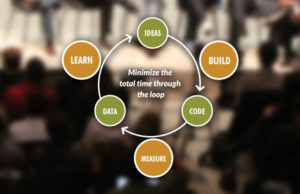From the Clean Air Act and Women’s Suffrage to an end to slavery and the Civil Rights Act, there are plenty of examples of successful grassroots campaigns that occurred in a pre-Internet era with the leadership of many decades-old organizations. Under next-generation leadership, however, many of these organizations, such as UNICEF, Greenpeace, Oxfam, and the Sierra Club, have recognized shifting campaign trends and are pursuing radical innovations in order survive, and often thrive, in this new digital landscape.
In recent years, these changing trends have been highlighted in multiple outlets, including Bonnie Koenig’s 2013 piece in the Stanford Social Innovation Review on the topic. Koenig writes:
How should NGOs and other civil society organizations deal with this tide of change? People are tackling this challenge, but conversations are often limited to institutes, think tanks, and exclusive gatherings. We need to take these conversations to new cross-sector, multigenerational venues and include practitioners who can help focus the conversation on how to transition from talk to action.
Of course, many smaller organizations don’t have the budget to fund a full innovation team internally. But as digital activism consultant, Mary Joyce, wrote in an Open Society Foundations piece, sharing information amongst campaigners can diffuse costs and enhance collaboration. Joyce writes:
…examples of digital innovations can be shared in whatever format participants prefer: a list of links in a monthly email to the staff listserv, a monthly video hosted by a staff member tasked with increasing innovation awareness, slide presentations at staff meetings, video conferences where an innovative team shares the story of their success with staff working on other campaigns.
Back in March, a handful of these leaders sat down at SXSW 2014 in Austin, Texas, to review how their institutions are using technology to adapt their internal structures, campaign work, and ideally, break through the noise. UNICEF’s Erica Kochi, Mobilisation Lab’s Michael Silberman, Core Collaboration’s Karina Brisby, representing Oxfam‘s shiftLabs, and Sierra Club’s Michael Grenetz, now at ActionSprout, lead the discussion and presentation.
Using #HackChange, the audience (both in the room and following on Twitter) was able to participate in the conversation. Below is a link to the full audio of the event, but first, here are four key points from the presentation:
1. You Can Teach A Dog New Tricks

In a world where anyone has the ability with a smartphone to make change, organize, and fundraise, the role of organizations who traditionally were the gatekeepers has been altered, and those organizations need to embrace this new paradigm in order to survive and meet its longterm goals. It is no longer enough for a big-branded institution to push for change solely as an organization.
Increasingly, targets need to see grassroots-led campaigns to take notice, and more importantly, to make changes. If utilized correctly, new tools are increasingly making it possible for organizations to galvanize the public to affect change.
2. Set Yourself Up for Success

You want to build up successful habits of innovation early on. Start small and cherry-pick opportunities up front which will allow you to point to successes right away. Further, involve other internal grassroots organizers from the get-go, so they will feel that sense of accomplishment by using these new techniques. This will create evangelists for the innovation program within the organization and will allow you to set yourself up to move to bigger goals and broader innovations. Some of these new evangelists will also sing innovation praises within their own divisions, and cross-organizational projects might develop.
3. Build Internal Political Capital

If you are in charge of innovation within your organization, make sure others inside the organization feel as if they are a part of it, not that you are force-feeding the change. By building the confidence of colleagues, both in the concept of innovation, and within your abilities to find new solutions, you’ll be able to take bigger risks that can have bigger outcomes in the future.
Further, make sure you share what you are learning with your colleagues, for example in monthly email updates (Top 5 Lessons Learned in May) or in-person briefings. These lessons can be vital to the continued growth of the innovation team. Additionally, be honest about the likelihood of success to your supporters within the organization. In order to succeed, you must be willing to fail.
4. Build for Scale

It is important to create innovations which have growth opportunities around the world, especially at an international institution. Simple, open-source solutions, which are replicable, are always beneficial to use. There is huge demand for information and “data for action,” so creating and implementing technologies which can be utilized in other projects, across the organization & beyond, is ideal. On the other hand, it is also important to share stories externally, both successes and failures, so other grassroots organizers can learn from what has been done before.
For more details, including specific examples of each of the key points above, take a listen to the full audio of the session:
Categories:
culture and leadership



